Maciá Pattern
The Maciá Pattern which was originally produced by a Barcelona cardmaker in the 1830s and subsequently used as a model by other makers.

Above: cards from 48-card hand-coloured wood-engraving published by Fábrica de Maciá, Barcelona, c.1830. © The Trustees of the British Museum, number 1896,0501.826►

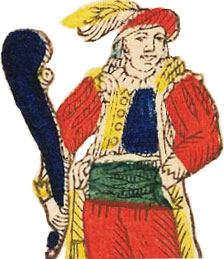
Anonymous manufacturer ~ “Fabrica de Madrid” ~ R.H.
This fine Spanish-suited deck from the nineteenth century shows most of the features of the style known as the Maciá Pattern which was originally produced by a Barcelona cardmaker in the 1830s and subsequently used as a model by other makers. It is not clear whether this example was made in Spain or elsewhere. The standing figures adopt classical poses and the Kings have the whole length of their legs in view, although in this example the Kings of Swords and Cups are not wearing laurel wreathes as in other examples and only two of the Kings are wearing shoulder-capes. The Ace of Coins shows a central medallion bearing a lion and a cannon, with two scrolls bearing the legend "Fabrica de Madrid". During the 1860s the pattern was also produced in Italy and by Spanish manufacturers in Barcelona and Igualada.
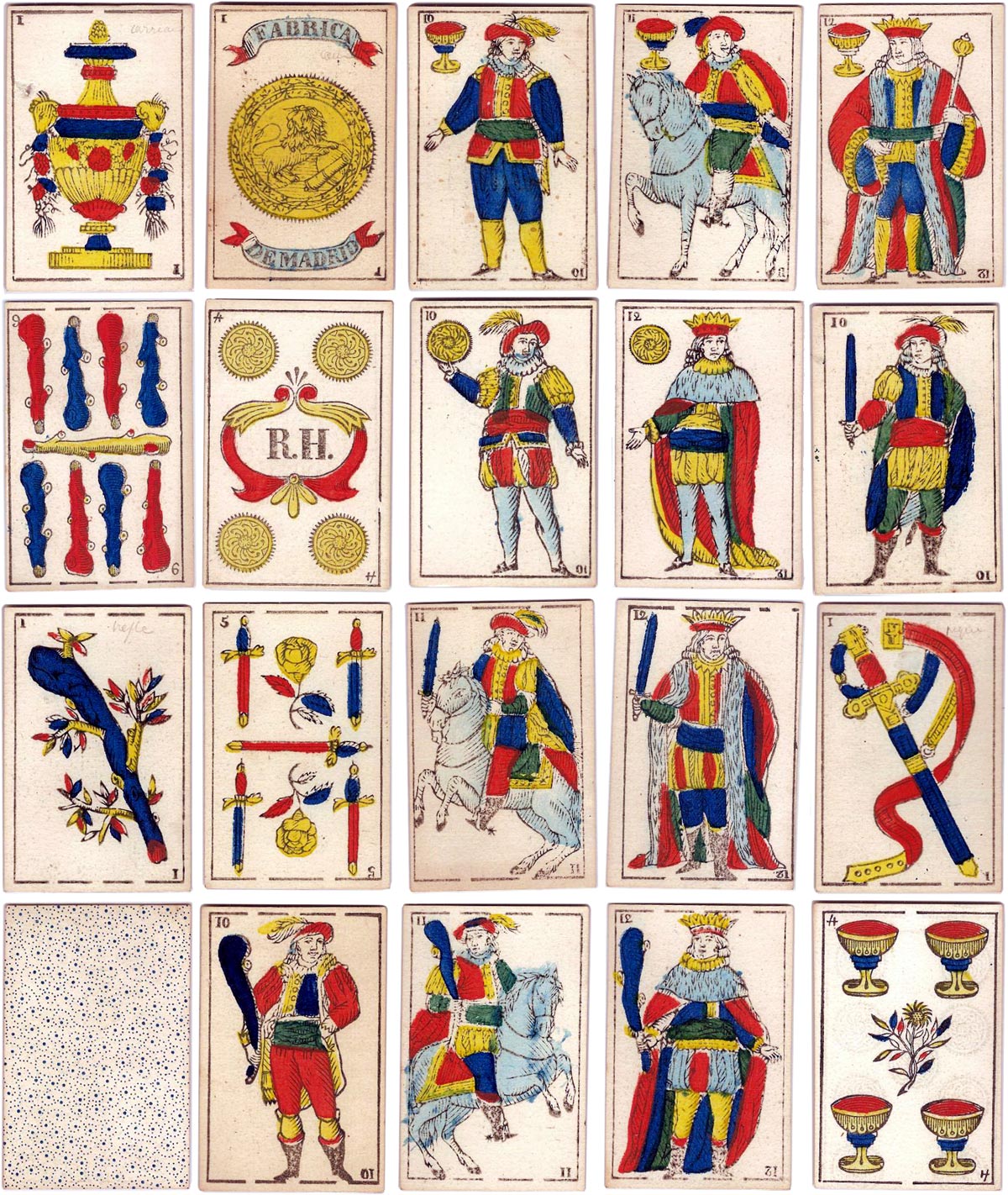
Above: Spanish-suited cards in the Maciá Pattern. Unknown manufacturer. The Ace of Coins carries the legend "Fabrica de Madrid" and the Four of Coins reads "R.H." The Ace of Coins is decorated with goats' heads and wreaths of flowers and the back is decorated with a pattern of swirling dots. Woodblock and stencil production.
See also: José Gombau, 1833►

By Simon Wintle
Member since February 01, 1996
Founder and editor of the World of Playing Cards since 1996. He is a former committee member of the IPCS and was graphics editor of The Playing-Card journal for many years. He has lived at various times in Chile, England and Wales and is currently living in Extremadura, Spain. Simon's first limited edition pack of playing cards was a replica of a seventeenth century traditional English pack, which he produced from woodblocks and stencils.
Trending Articles
Popular articles from the past 28 days
Related Articles
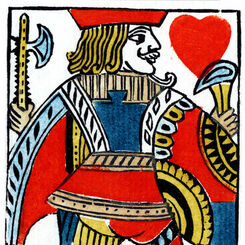
Woodblock and Stencil Jack of Hearts
A limited edition art print of the Jack of Hearts 1984 woodblock joker.
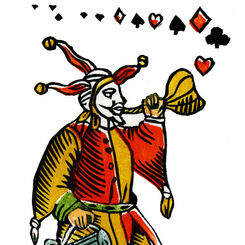
Woodblock and Stencil Joker
A limited edition art print of the 1984 woodblock joker.
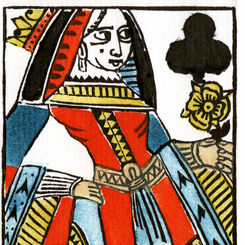
Woodblock and Stencil Queen of Clubs
A limited edition art print of the Queen of Clubs 1984 woodblock joker.
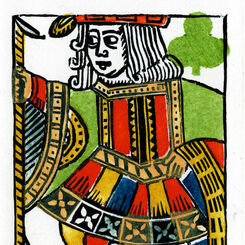
Woodblock and Stencil Jack of Clubs
A limited edition art print of the Jack of Clubs 1984 woodblock joker.
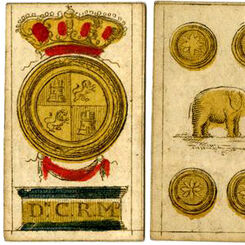
Miniature spanish-suited playing cards
Pack of 48 miniature spanish playing-cards published by C R.
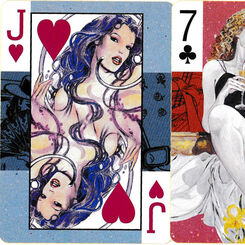
Manara: baraja de poker
Exotic illustrations by Italian comic book artist and writer Milo Manara.
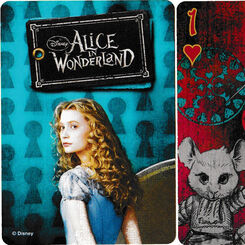
Alice in Wonderland
Alice in Wonderland collector’s edition with illustrations of characters from the film, published by...
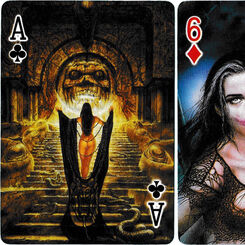
Women by Royo
‘Women by Royo’ erotic playing cards published by Heraclio Fournier, Spain, 2001.
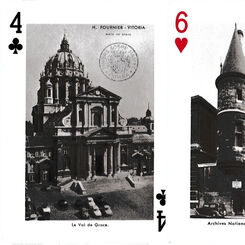
Monuments de Paris
‘Monuments de Paris’ souvenir playing cards produced by Heraclio Fournier, c.1964.
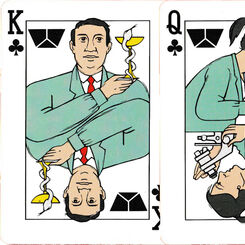
B. Braun-Dexon®
Publicity pack promoting B. Braun-Dexon’s atraumatic needles, with non-standard courts and pips.
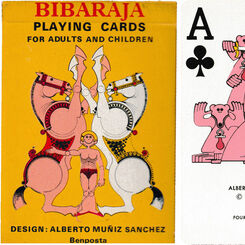
Bibaraja
Amusing designs of boys as circus performers by Alberto Muñiz Sánchez.
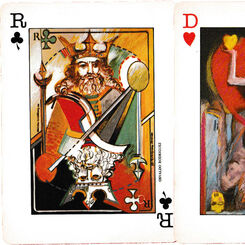
Peintres Latino Americains
Original artwork by 18 different Latin American artists.
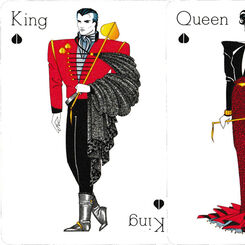
Paco Lobo
Highly original and striking designs by Paco Lobo for the fashion house of the same name.
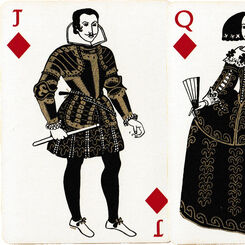
Loewe: Moda Europea Siglo XVII
Luxury pack for the Spanish fashion house Loewe, with 17th century costume designs by Margot Hamilto...
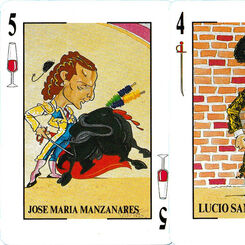
Toros: De El Cordobés a Espartaco
Publicity pack for the Spanish newspaper Ya with caricatures of famous bullfighters by Fernan...
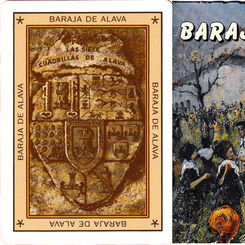
Baraja de Alava
55 different paintings by Emilio Lope depicting the history and culture of Vitoria and the province ...
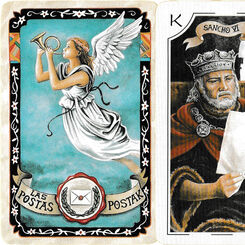
Postak – Las Postas
‘Postak - Las Postas’ playing cards commemorating the history of the Basque postal service, Spain, 1...
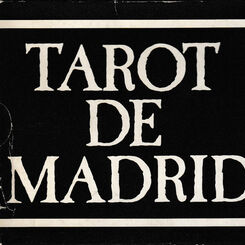
Tarot de Madrid
Black-and-white photographs of models whose faces are made up using elements found on the major arca...
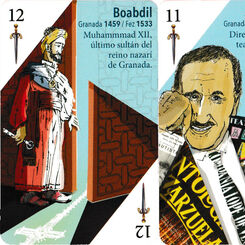
Naipes de Personajes Granadinos
Forty famous men and women with links to Granada, on a pack designed by Rubén Garrido.
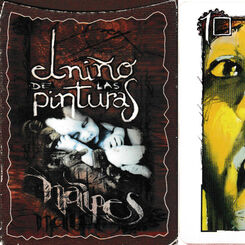
El Niño de las Pinturas
Forty-nine distinctive works by Spanish graffiti artist Raúl Ruiz.
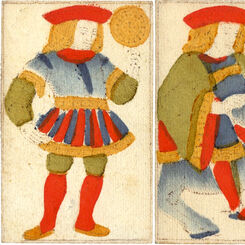
Pere Pau Rotxotxo Puigdoura
Spanish national pattern by Pere Pau Rotxotxo Puigdoura (1766–1797).
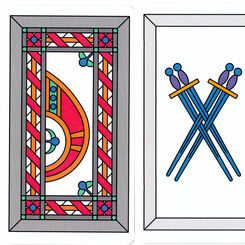
Moorish Deck
Review of “Trzes’ Moorish Deck” facsimile published by Ulrich Kaltenborn, Berlin, 2023.
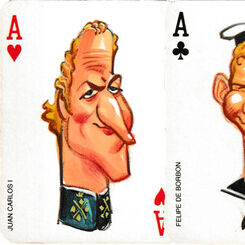
El Jueves playing cards
Caricatures of 52 famous Spaniards for the satirical magazine “El Jueves”.

Naipe Navarro
Historical figures and artefacts from Navarre with designs by M. Sinués for the Navarre Association ...
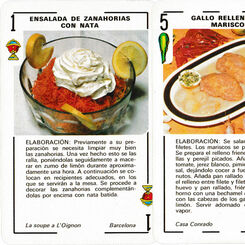
Bankunión playing cards
Ingredients and recipes for 24 dishes from different regions of Spain.
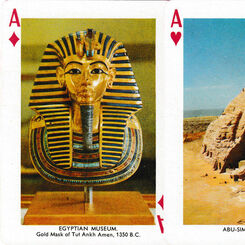
Souvenir Playing Cards of Egypt
55 different photographic views of Egypt in full colour.

Baraja Mística
‘Baraja Mística’ satirical playing-cards featuring revelling clergy published by Litografía Fernánde...
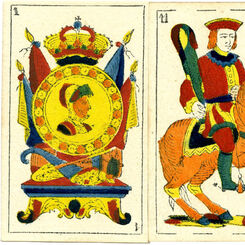
José Maria Durán
Spanish Catalan pattern by José Maria Durán, Barcelona, c.1870.
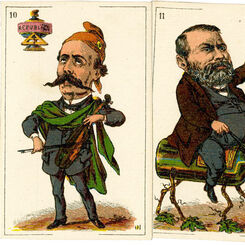
Spanish Political pack
Satirical playing cards manufactured by Francar y Cía depicting political situation, Barcelona, 1872...
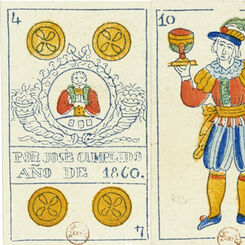
José Cumplido
Raimundo García pattern produced by José Cumplido in Madrid, dated 1860 on the four of coins.
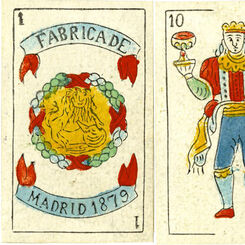
Juan Humanes y Cía
Raimundo García pattern published by Juan Humanes y Cía, Madrid, 1879.
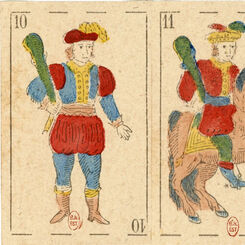
Pou y Cía
Catalan pattern made by Pou y Cía, Madrid c.1860.
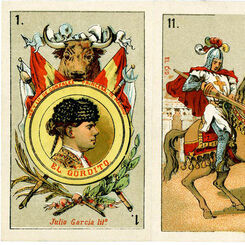
Nueva Baraja Taurina
'Nueva Baraja Taurina' designed by Pedro Maldonado, Madrid, c.1885.
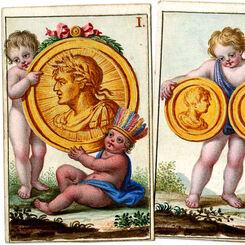
Amorcillos
‘Amorcillos’ (Cupids), a masterpiece from the golden age of Spanish playing cards by Clemente Roxas,...
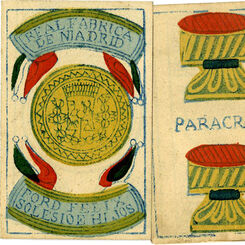
Félix Solesio e Hijos
Félix Solesio e Hijos - Real Fábrica de Madrid - Spanish National pattern for Venezuela
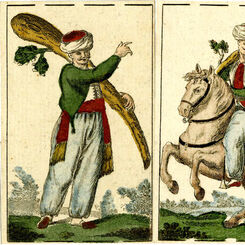
Four Empires - Clemente Roxas
‘Four Empires’ playing cards produced by Clemente Roxas, c.1805.
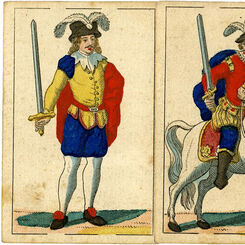
Llombart Costume Pack
Military-style costume pack made by Anton Llombart, Barcelona, 1815.
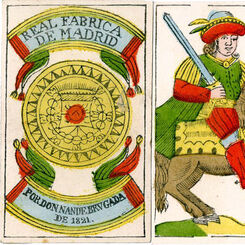
Juan de Brugada
Spanish National pattern by Juan de Brugada e hijo, Real Fábrica de Madrid, 1821.
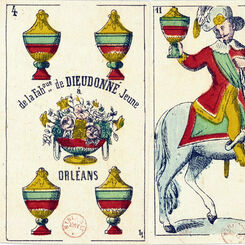
Aluette by Dieudonné Jeune, Orléans, c.1850
Aluette game by Fabrique Dieudonné Jeune, Orléans, for Spanish market, c.1850.
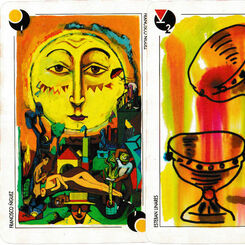
Baraja Española de Pintores Murcianos
A Spanish-suited pack as conceived by 48 different artists from the region of Murcia.
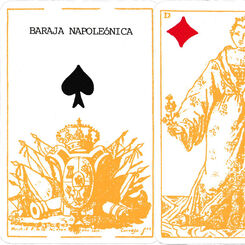
Baraja Napoleónica
Re-edition of a French-suited Spanish pack from the Napoleonic era, with designs by J. Carrafa.
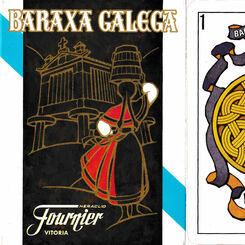
Baraxa Galega
Baraxa Galega designed by F. Perez Llamosas and published by Naipes Heraclio Fournier, 1983.
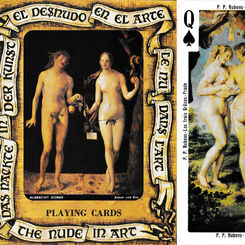
El Desnudo en el Arte
The Nude in Art / El Desnudo en el Arte, Spain, 1977 (reprint 1990)
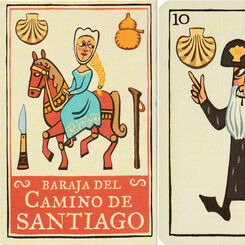
Baraja del Camino de Santiago
Designs by Guitián, published by Ideas Peregrinas, Santiago de Compostela, Spain, c2018.


